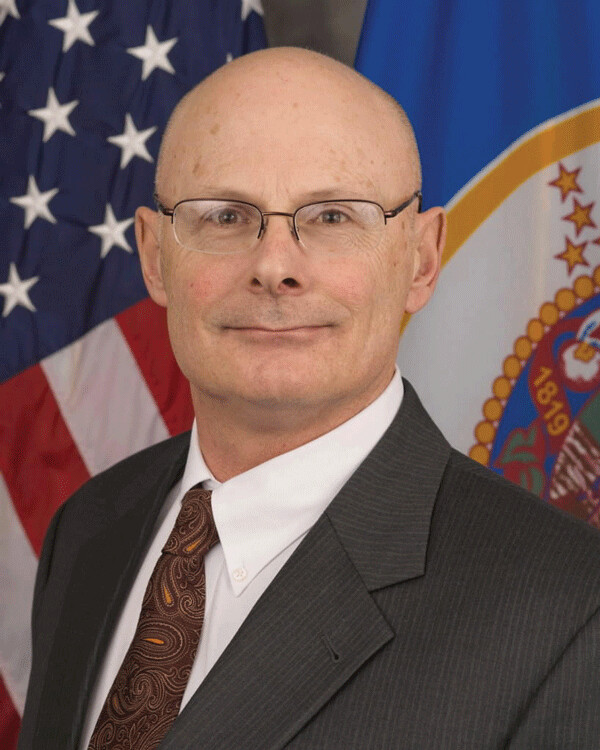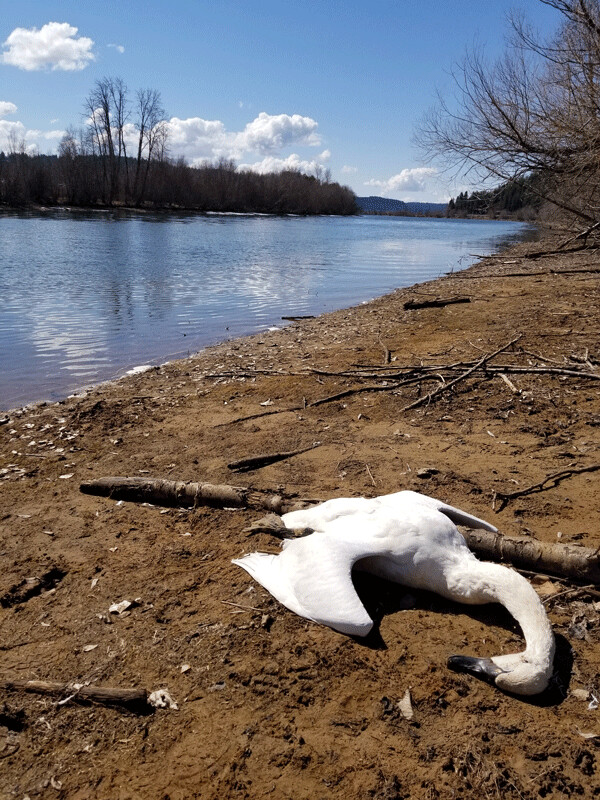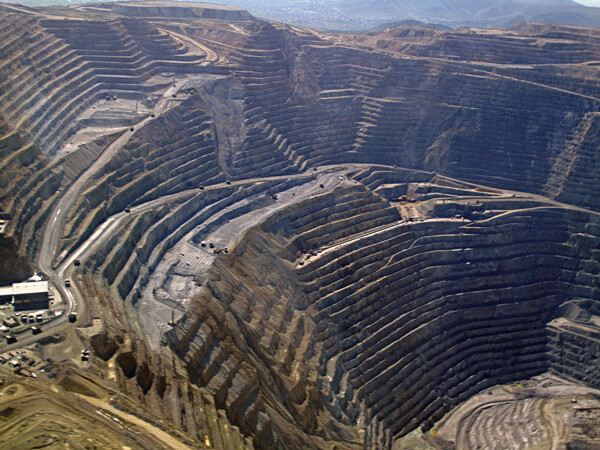News & Articles
Browse all content by date.

On March 5, 2019, former Minnesota Department of Natural Resources (DNR) commissioner Tom Landwehr made the stunning announcement that he was the new Executive Director for the Save the Boundary Waters campaign.
Landwehr had just ended an 8 year stint with the Dayton administration, culminating in the granting of state permits to PolyMet, which would be the first ever copper sulfide mine in Minnesota. Landwehr abruptly shifted roles to a campaign seeking to protect the Boundary Waters Canoe Area Wilderness from just such mining.
PolyMet’s low-grade copper-nickel deposits are located next to deposits claimed by Teck America, and those of Twin Metals. While PolyMet’s mine pollution would enter the headwaters of Lake Superior, the adjoining Teck and Twin Metals’ deposits are in the Rainy River watershed, which flows into the Boundary Waters.
Landwehr’s PolyMet background
When Minnpost (3/19/19, “State Standards Don’t Work Here”) asked Tom Landwehr what brought him to the Campaign to Save the Boundary Waters, he responded,”...I needed a job, right?”
Prior to his job as DNR head, Landwehr was the assistant state director for the Minnesota Chapter of the Nature Conservancy, a group which participated in a land exchange with the U.S. Forest Service for PolyMet’s toxic sulfide mine. Under the Dayton administration, Landwehr’s job was to oversee the permitting of PolyMet. “It is just going to be critical that we find ways to make mining acceptable,” Landwehr told the Worthington Daily Globe after he was appointed commissioner, on January 7, 2011.
A Star Tribune article, dated August 25, 2013 (Dayton feels heat as environmentalists, labor allies clash on mining), explains the political conundrum that faced the DFL leadership during Landwehr’s time as commissioner. The article reads, “As Dayton lays the groundwork for his re-election campaign next year, he is striving to strike a delicate balance between the demands of environmentalists he feels a deep kinship with and his devotion to the labor movement that played a crucial role in his 2010 election.”
A political plan was thus concocted to “give ‘em PolyMet and stop em’ at the Boundary Waters.” Landwehr spent his DNR tenure facilitating and overseeing the permitting of PolyMet.
How not to stop a mine
The PolyMet project could have been stopped at many junctures along the way. On February 18, 2010, PolyMet’s draft Environmental Impact Statement (EIS) was given a failing grade by the Federal Environmental Protection Agency (EPA). At that time, Ken Westlake of the EPA stated, “The most compelling issue, from our point of view, is the admission (by PolyMet) in the draft EIS that this project will violate state and tribal water-quality standards.” (Duluth News Tribune, Sept. 16, 2010, EPA cautious, not arrogant, on PolyMet).
But Landwehr kept the ball rolling on PolyMet’s EIS process. Perpetual (500 years or more) water treatment was reworded as ‘long term’. Treatment at the mine site upon closure was changed from active to passive, to make it politically acceptable. And finally, all problems were stashed together under the solution of adaptive management — whereby pollution was deemed probable, but treatment would be figured out after the fact.
Then on October 24, 2017, Gov. Mark Dayton made his final move. Even though in the past, he talked about “inherent risk” and “highly toxic sulfide waste,” Dayton told the St. Paul Pioneer Press (as reported by MPR) that he’s moved from being “genuinely undecided” on the proposed PolyMet copper-nickel mine to being a genuine supporter. “Nothing of that magnitude is risk free but I think it’s a risk worth taking and I support the project.”
Thus Gov. Dayton made public his marching orders for Commissioner Landwehr. On Nov.1, 2018, PolyMet received its state permit to mine.

How environmental agencies fail us
The U.S. Forest Service could have stopped PolyMet’s open pit mine plan from the get-go. According to the Weeks Act of 1911, open pit strip mining is not allowed on land purchased for watershed protection. PolyMet’s proposed open pits would be located on 6,700 acres of what is now Superior National Forest. Rather than uphold its public duty to the citizens of Minnesota and the nation, the USFS entered into a land exchange with PolyMet--literally giving U.S. land to a foreign mining company.
The U.S. Army Corps of Engineers has likewise caved in to foreign mining interests. The Army Corp just gave PolyMet a 404 permit that will allow for the single largest destruction of wetlands in the St. Paul District’s history.
In the meantime, the EPA has remained quiet on PolyMet. Kathryn Hoffman of the Minnesota Center for Environmental Advocacy, states in the Star Tribune (April 17, 2019, Greater transparency from EPA is needed for court review of PolyMet mine proposal),”In discussions with MPCA staff, EPA warned them that this permit would not be enforceable. From what we can see, PolyMet’s water permit won’t just fail to prevent pollution — it will actually prevent PolyMet from being held accountable if pollution occurs.” The concerns were never made public.
Landwehr’s next move
Coming out of this contaminated process, Landwehr--who knows all of the pitfalls of sulfide mining, as well as the politically motivated maneuvers that railroaded in the permitting of a mine destined to pollute the Lake Superior watershed — has been hired to protect the Boundary Waters from Chilean mining company Twin Metals. As of April 11, 2019, Twin Metals announced the hiring of attorney Julie Padilla “to oversee submission of Twin Metal’s Mine Plan of Operation (MPO) ...for their proposed copper-nickel mine.” (Twin Metals Minnesota).
While overseeing the permitting of PolyMet, Landwehr defends his new role in opposing mining near the Boundary Waters. “The state standards actually anticipate some degradation. ...But that’s what the state law permits. ...That doesn’t mean that the project has no impact. And the other thing I’d point out is that the state permitting process … relates to environmental impact. So it doesn’t look at economic, it doesn’t look at cultural, it doesn’t look at quality of life. It’s a very narrow prescriptive. It doesn’t look at health. You know, there was a lot of debate about ‘should we do a health impact analysis in this project?’ That’s not what the law provides for; it provides just for an environmental review. And so I would assert that’s not the full range of issues that ought to be considered when you’re looking at something that’s so existentially different from what you’ve got in the environment up in the Boundary Waters. (Minnpost, 3/19/19, ‘State standards don’t work here’)
To further try to explain his new position, Landwehr goes on: “State standards are applied everywhere. What we’re saying is the state standards don’t work here in this spot. ...They were never developed to anticipate being on the edge or the watershed of a wilderness area.”
Landwehr had neglected to mention that he, along with then MPCA commissioner John Linc Stine and Department of Health Commissioner Edward P. Ehlinger had decided not to conduct a separate health impact assessment (HIA) for PolyMet’s proposed copper-nickel mining project because “An HIA would have the potential to introduce unintended delay in decision making...” (Business North, Dec.7, 2015, State rejects call for health impact study of PolyMet’s plan).
Questioning of Landwehr’s statement
On April 1, 2019, in Minnpost (Copper mining dangers: Bold leadership is needed from Walz), former Republican Gov. Arne Carlson and former state representative Janet Entzel responded to Landwehr’s statements. “We are led to believe that somehow mining contaminates flowing into the St. Louis River and Lake Superior are healthy, but when they move in the direction of the BWCA they become highly dangerous. We are further being told that the permitting process for PolyMet was ‘rigorous,’ but the same process is inadequate for the second mine....Clearly, a determination was reached that the PolyMet mining permit was to go through unimpeded, and that directive had to come through the governor or the commissioners. Either way, the process was fatally flawed.”
In a local view editorial piece posted in the Duluth News Tribune on March 20, 2019, Marc Fink, senior attorney for the Center for Biological Diversity wrote, “Northeastern Minnesota is blessed with two world-class natural resources: the Boundary Waters Canoe Area Wilderness and Lake Superior. Upstream of each is the possibility of copper mining that would impose severe risks of permanent, toxic pollution. ...Landwehr issued key permits to PolyMet for its proposed open-pit copper mine, despite acknowledging the environmental risks. As is often the case, just below the surface are issues of environmental justice. Downstream from PolyMet is the Fond du Lac Indian reservation. ...And according to a 2011 Minnesota Department of Health study, one out of ten babies born in the Lake Superior region has unsafe levels of toxic mercury in their bloodstream. ...Hardrock mining is the nation’s most toxic industry, and its harmful environmental legacy lasts forever. A massive copper mine in the wetlands and forests of Northeastern Minnesota is too destructive and risky, whether in the Lake Superior watershed or just over the divide in the Boundary Waters watershed.”
Revolving door keeps moving
On February 1, 2011 the Star Tribune reported, “ ....Brad Moore, former Minnesota Pollution Control Agency Commissioner and assistant commissioner of the Department of Natural Resources, has taken a top job with PolyMet Mining of Hoyt Lakes. ...Moore’s career in many ways has paralleled that of new DNR Commissioner Tom Landwehr, and the two are friends. “ (PolyMet scores by landing ex-pollution control chief for its top job). Today Moore is PolyMet’s Executive Vice President of Environmental and Governmental Affairs.
Meanwhile, Landwehr’s partner in permitting, former MPCA Commissioner John Linc Stine, has just taken a job as executive director of St. Paul-based Freshwater. In an April 3, 2019 interview with Elizabeth Dunbar of MPR (Former regulator wants to bring people together around clean water), Stine opines “...people here have a good-natured desire to do the right thing for the environment, but certainly for our water. It’s the most valuable thing that we can claim, when you travel across the world: Minnesota has these wonderful lakes and these beautiful rivers and Lake Superior is the beginning of the Great Lakes system where 20 percent of the world’s fresh water is.”
Yet on December 20, 2018, Stine’s MPCA department granted the final air and water permits and 401 certification (regarding discharge of a pollutant into waters of the United States) for PolyMet. Regarding the PolyMet decision, Stine stated, “ In general, I had strayed away from deciding what I thought personally was right and was wrong, because if I did that, I would have doubted every decision. ...I viewed the system as what it is. It’s right because that’s what we approved.”
After granting permits for a toxic sulfide mine to operate in the Lake Superior watershed, Stine told MPR that his toughest decision was denying a permit for a hog feedlot in southeastern Minnesota. “That really was agonizing for me.”

Legal challenges to PolyMet remain
PolyMet’s final approval is now in the hands of our state and federal courts. Meanwhile, the Minnesota legislature has appropriated tax payer money to defend the permitting of PolyMet. In 2016, the DNR received $3.2 million and the MPCA $1.2 million for PolyMet-specific legal fees. Then in 2017, the DNR received another $1.5 million and the MPCA $500,000.
Under Gov. Tim Walz, $6 million is recommended for the DNR and MPCA “to defend their environmental and natural resources decisions...” (Duluth News Tribune, Feb. 21, 2019, Walz looks to boost legal funds to defend PolyMet, other decisions).
This money has been appropriated despite the fact that 74% of Minnesotans oppose the permitting of PolyMet (MEP, Minnesota Voters’ Environmental Priorities in 2017).
Minnesota at a crossroads
When critical environmental decisions are based upon political maneuvering and industry influence and propaganda, rather than upon integrity or valid science, nobody wins.
Pitting one watershed against another is not the answer. We all need clean water in order to live. The headwaters of both Lake Superior and the Boundary Waters are northeast Minnesota’s most precious natural resources and both deserve to be protected from highly toxic sulfide mining.
For more information, go to
www.sosbluewaters.org.
| Tweet |


